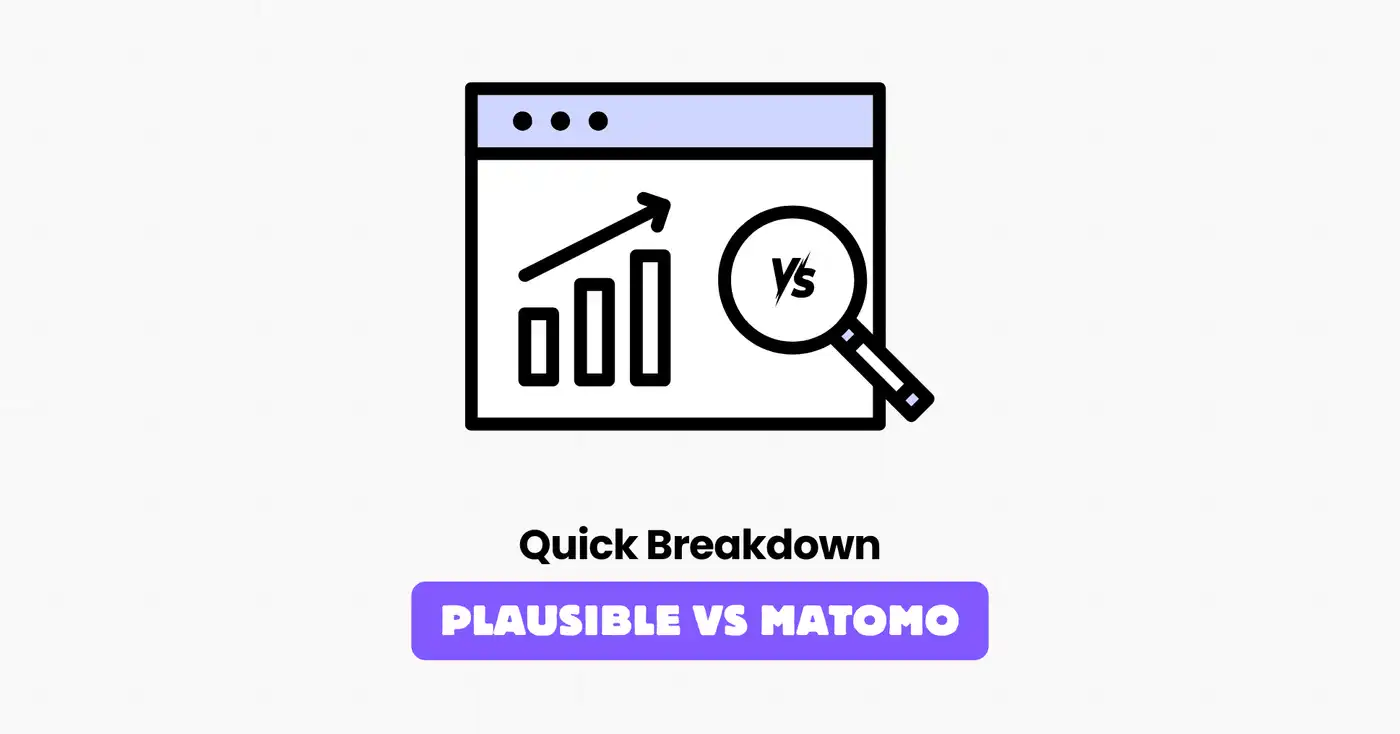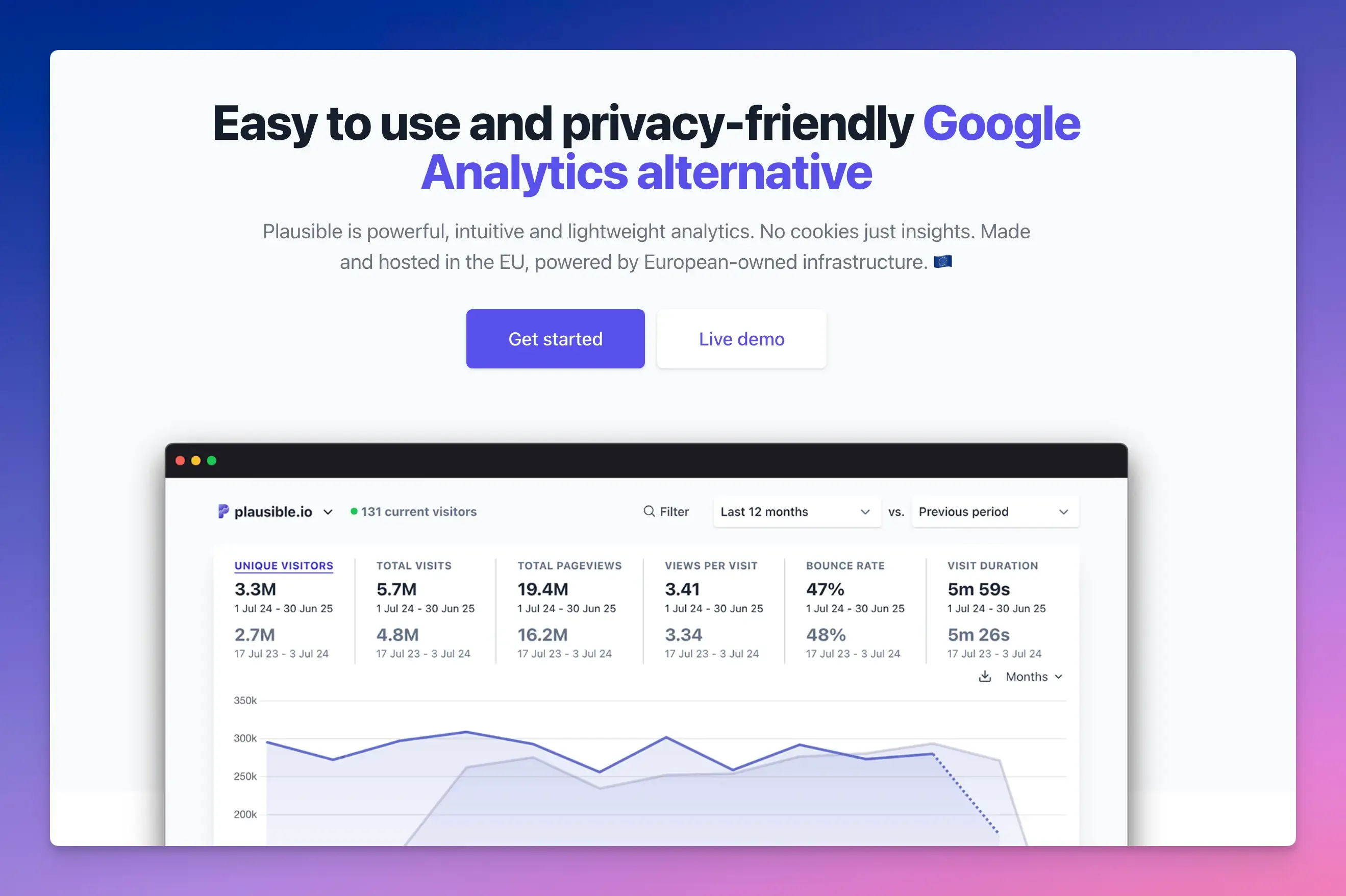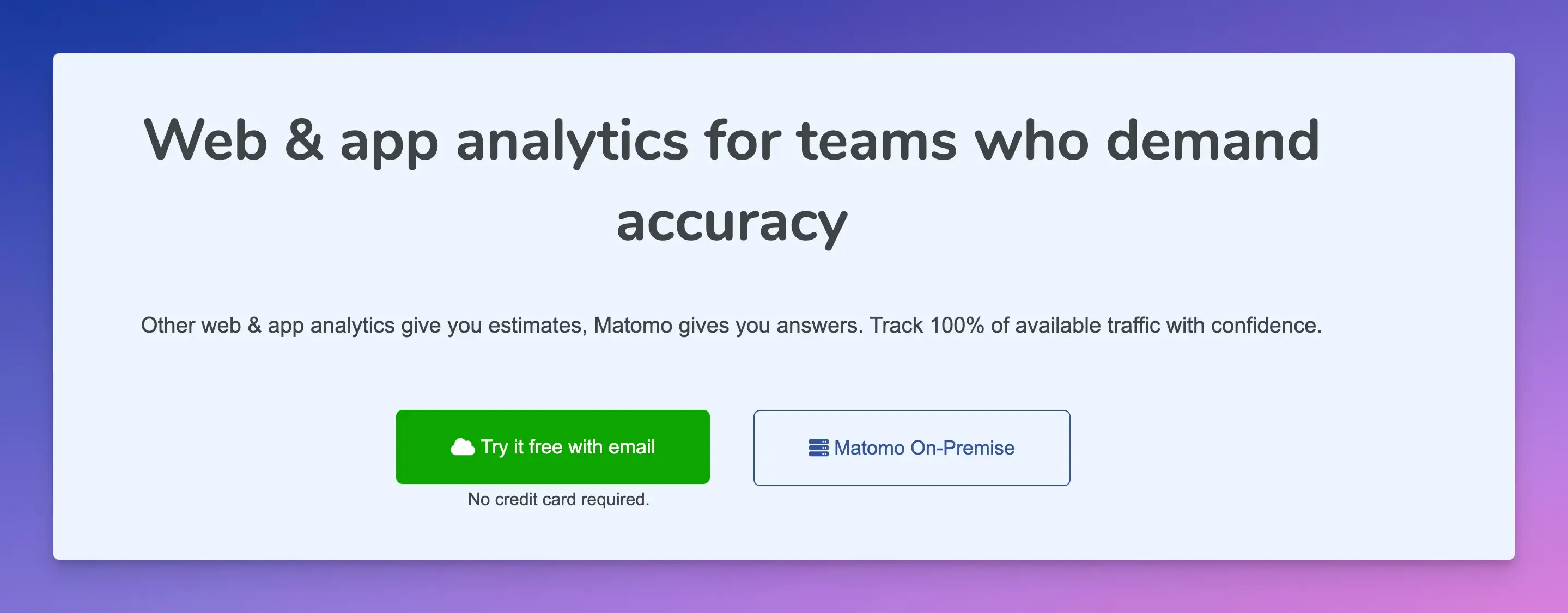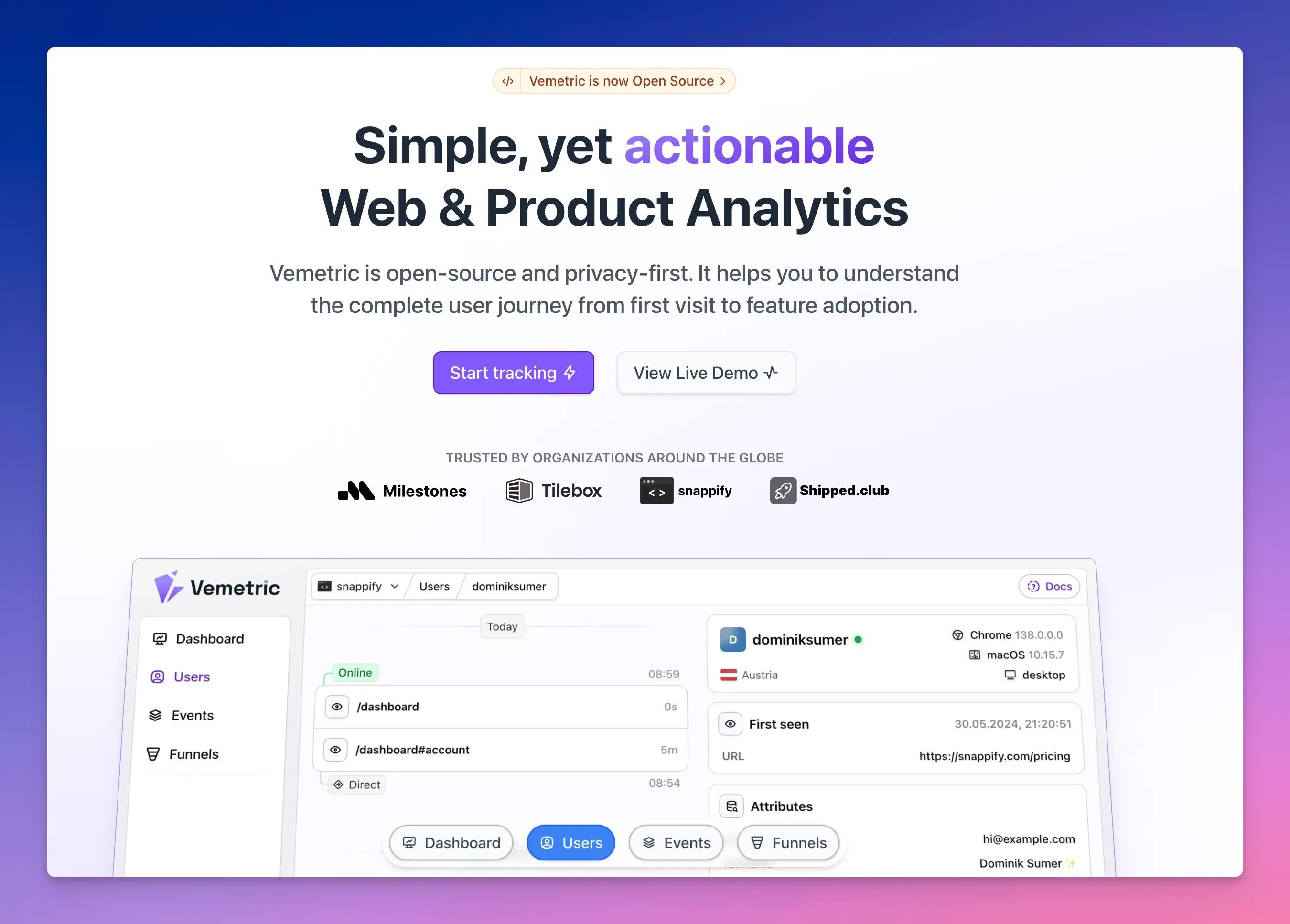
Plausible vs Matomo: Quick Breakdown (2025)
There are many web analytics tools out there, and it can be challenging to decide which one is best for you.
If you’re looking for privacy-first, open-source Google Analytics alternatives, Plausible and Matomo are probably on your short list.
Both tools promise full data ownership and GDPR‑friendly tracking, but they suit very different needs.
The solution you choose can impact setup, performance, long‑term flexibility, and team workflows.
This guide will give you a clear view of both tools: what they track, how they work, what customizations they allow, and which is the better fit depending on your website traffic and analytics requirements.
Let’s get started.
What is Plausible Analytics?

Plausible Analytics is an open‑source, privacy-first web analytics platform for developers who need essential website metrics without complexity.
Developed by a small EU-based team, it offers both a hosted and self-hosted version and is designed to avoid personal data collection and cookies by default, so you don’t need legal workarounds or consent pop-ups.
It’s ideal for quick adoption and clean dashboards, providing core insights like page views, unique visitors, traffic sources, bounce rate, conversions, and scroll depth in a fast, easy‑to‑use interface.
Key Features of Plausible
- Lightweight: Plausible’s small script size (less than 1KB) enables faster page loads without slowing down your site performance.
- Cookieless Tracking: No cookies, no personal data, GDPR, CCPA, and PECR compliance by default.
- Real-time Dashboard: The UI is a single page that displays essential metrics and updates every 30 seconds without refreshing to deliver the most recent insights.
- Conversion and Funnel Tracking: Analyze user journeys across pages, domains, or custom events. Also includes codeless goal setup, UTM tracking, and funnels to see drop-off points.
- Data Ownership: Offers both self-hosted and managed cloud deployment, giving you complete control over user data without sharing it with third parties or using data sampling for any reports. This means you receive accurate analytics with full privacy controls. Plus, EU-only data residency guarantees that all visitor data is processed and stored entirely on EU-based servers, avoiding legal repercussions.
- Integrations: Works with Google Search Console, WordPress, email, and Slack reports.
Pros of Plausible Analytics
- Speed: Simple UI and minimal setup time.
- Privacy: Fully cookieless, no persistent identifiers, cross-site or cross-device tracking, and no need for consent banners.
- Low Maintenance: Small footprint, easy Docker-based self-hosting, and low server load.
- Transparency: Developed openly under AGPLv3 license, with full access to source and community contributions.
- Essential Metrics: The dashboard focuses on core stats, a clear advantage for teams needing clear data visualization without granular details.
Cons of Plausible Analytics
- Limited Depth: No heatmaps, session recordings, visitor profiles, advanced segmentation, cohorts, A/B testing, or funnels beyond the basic.
- Limited Customization: Dashboard has a fixed layout, with fewer integrations and no native tag manager.
- No Raw Data: You can export only summarized stats; raw data is not accessible.
- Scalability Challenges: It offers basic insights, which may not be suitable for large organisations or high-traffic sites.
What is Matomo?

Matomo is an open source web analytics platform that offers full-featured analytics comparable to Google Analytics, with a strong emphasis on data privacy.
Available as a free self-hosted version or managed cloud service, it provides deep website analytics, including funnels, conversion tracking, session playback, and segmentation, while keeping complete control of visitor data on your infrastructure.
Key Features of Matomo
- Advanced Reports and Customization: Matomo offers a custom dashboard, visitor behavior tracking, and navigation paths, allowing you to choose from over 200 dimensions and metrics to get the insights you need.
- Detailed Analytics: View full sessions, paths, duration, bounce, heatmaps, scroll maps, and session recordings. It also includes A/B testing, e‑commerce tracking, funnels, form analytics, search keywords, annotations, and cohorts to provide actionable data.
- Tag Manager: Built-in tag manager allows non-developers to add tracking without code changes.
- Privacy Tools: It also offers built-in privacy features such as GDPR manager, consent management, user rights, Do‑Not‑Track support, IP anonymization, and cookieless options. It can be configured to follow strict privacy laws like GDPR, HIPAA, CCPA, and PECR, ensuring that all of your data is private and held by you, and your website respects the privacy of its users.
- Raw Data Access: With Matomo, you get access to raw data for unfiltered logs, custom analysis, and integration with data warehouses. You can export data via direct MySQL database access (on-premise only) or use the HTTP API to download all data or set up custom ranges.
- Integrations: It includes over 100 integrations with popular content management systems (CMS), e-commerce platforms, and web development frameworks.
Pros of Matomo
- Feature-Rich: Matomo supports nearly any analytics need from basic traffic to deep behavioral insights.
- Plugin Ecosystem: Functionality can be extended with plugins for session recording, SEO tools, data exports, mobile SDKs, etc.
- Scalable: It can handle high traffic volumes with proper hosting and supports multiple domains and large teams.
- Large Community Support: Extensive documentation and paid support plans available.
Cons of Matomo
- Complex Setup: Initial configuration can be time-consuming and requires a complex setup for advanced features.
- Steep Learning Curve: Its comprehensive feature set can be an overkill for simple use cases.
- Resource-Intensive: Its client script is heavier than Plausible (~22.8 KB). A larger tracking payload may affect performance.
- Cost for Cloud Version: Managed Matomo Cloud has tiered pricing and can be expensive at scale.
Which One to Choose: Plausible vs Matomo?
Both Matomo and Plausible Analytics are privacy-focused analytics tools, but they offer different benefits.
Plausible’s lightweight script and cookie-free model comply with modern privacy laws, whereas Matomo is best suited for detailed statistics and user journey mapping.
Choose Plausible If:
- You run a static site, blog, or small SaaS.
- Your priorities are speed, simplicity, and compliance.
- You lack technical resources for maintenance.
- Basic traffic stats satisfy your needs.
Choose Matomo If:
- You need funnel analysis, session recordings, or heatmaps.
- You operate in regulated industries like healthcare or finance.
- You’re migrating from Google Analytics.
Vemetric: A Plausible and Matomo Alternative

If you want a modern open source web analytics tool, Vemetric stands out as a uniquely balanced alternative to Plausible Analytics and Matomo.
It combines product and web analytics into a single platform, providing lightweight, privacy-focused analytics while retaining the benefits and full transparency of open source software.
Choose Vemetric if:
- You want a single solution to track visitor behavior from first visit to feature adoption.
- You’re looking for a cost-effective solution that is simple to set up and maintain.
- You require GDPR/CCPA compliance audits.
Final Words
In conclusion, Plausible is your go-to for lightweight, ethical tracking, especially if you want to track simple web analytics and traffic sources.
Matomo delivers when you need enterprise analytics without compromising data ownership.
Test both tools side-by-side and choose what feels right for your website.
If you like this article, check out our other guides:
FAQs
Plausible’s small script and cookie-less tracking evade most ad-blockers by default. Matomo’s larger script is frequently blocked by ad blockers, privacy tools, or anti-tracking add-ons, unless you use their “Stealth” tracking proxy.
Both tools have mobile-friendly dashboards, but Plausible’s is faster and cleaner for on-the-go checks. Matomo’s mobile app displays more data, but it feels cluttered on small screens.
Ready to understand your users?
Start tracking